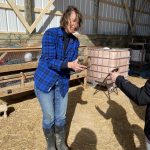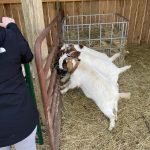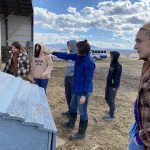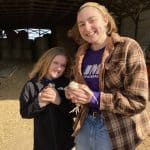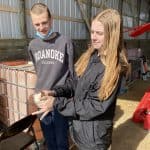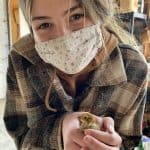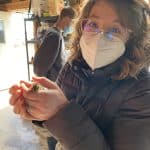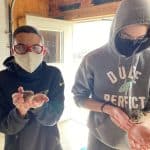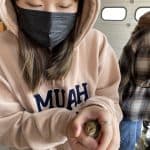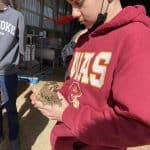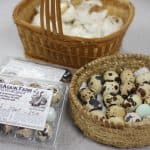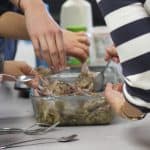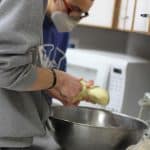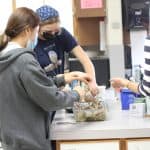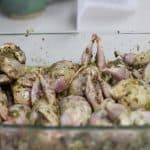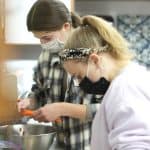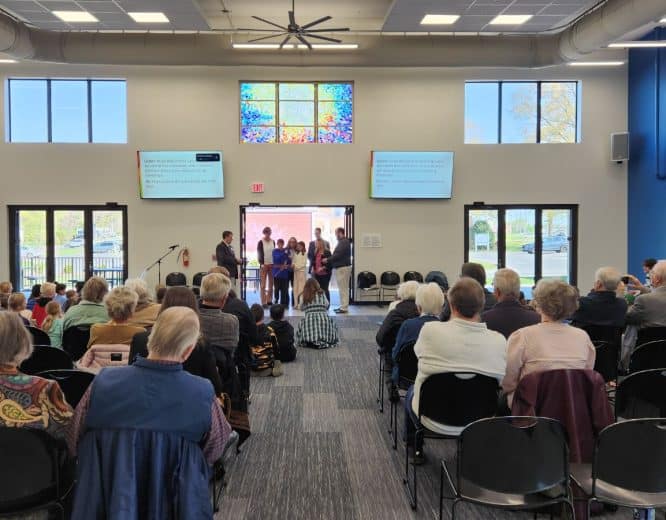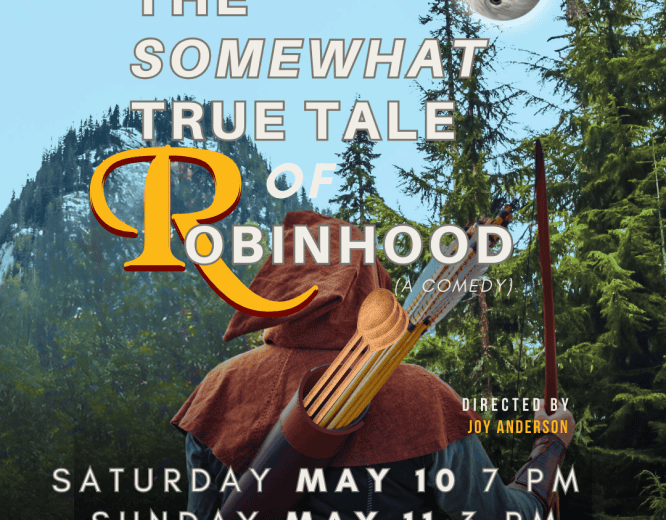Local Eating, from Farm to Table
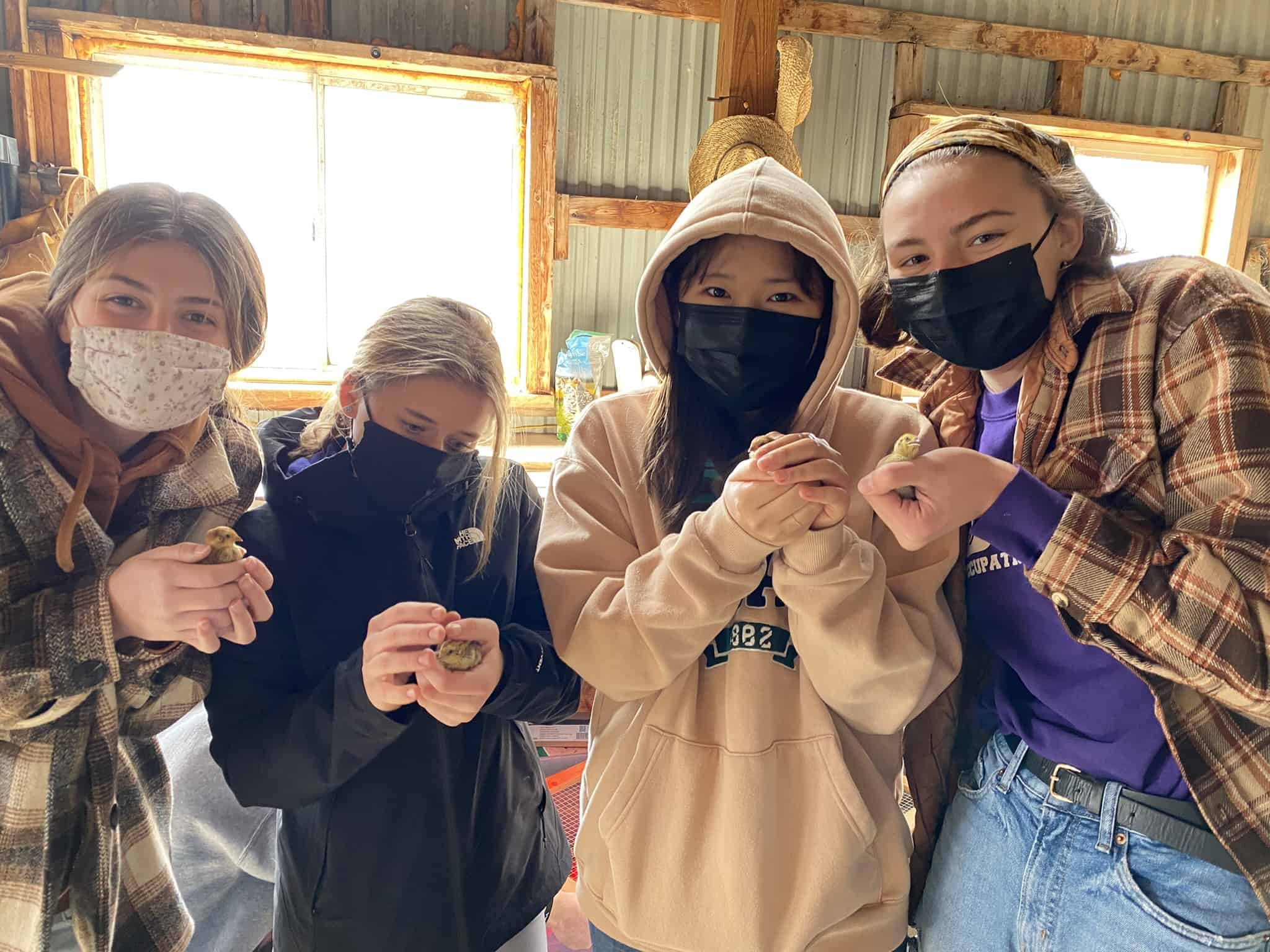
A field trip to a local family-run farm that raises chickens, quail, turkeys and goats — followed by classroom instruction from the farmer on how to prepare an entirely locally-sourced feast — gave students in Anna Haarer’s Local Food class a lot to digest (pun intended!).
It was a “little disturbing and sad” to hold quail chicks one day and learn how to cook them a few days later, admitted one student when surveyed about the experience. But it was also important to “learn the connection between the farm and the table.” Others mentioned that it helped them appreciate their food, and to eat with care after seeing the connection between food and where it comes from.
Rose Shenk ‘86, launched HomeAgain Farm near Harrisonburg, together with her husband Bruce Buckwalter, a little over a year ago. Their son, Jacob ’22, is in the class. Rose generously hosted the two sections of the class for field trips at the farm, and came to the class the next day to help them cook. (See videos of the farm at #HomeAgainFarm on Facebook and read more about the farm on Rose Shenk’s blog, Grace and Grit.)
“We’re just starting our farm adventure,” Shenk says, noting the most recent addition to the farm, a Great Pyrenees puppy named Luna, who lives with the goats.
The class went to the farm on a Thursday to meet the animals and talk about local food chains and farm-to-table meat options “when many people have lost touch with where their meat comes from,” she says. Friday, she joined the class in the building’s Family and Consumer Science kitchen to prepare the meal which featured quail meat that Shenk had butchered and dressed earlier. Sides were potatoes, salad greens and vegetables from Woods Edge, with homemade apple pie for dessert.
“Admittedly, not all ingredients were strictly local,” Shenk says. “The lemons, for example, which I squeezed for the quail marinade, were imported. The apples for the pie, and the bacon that we placed on the quail breast were from Pennsylvania, but both apples and bacon are available locally. The same with flour for the pie crust and butter and cream for the potatoes. Although they are available locally, it was more convenient to use what I had on hand.”
As interest in local food networks and farm fresh ingredients increases, it will be possible to source almost all food items locally, cheaply, and conveniently, explains Shenk. “There will always be exceptions, however,” she notes, “especially for coffee drinkers!”
In addition to the quail adventure, the local food class has visited Breneman-Turner Mill, a historic grist mill near Harrisonburg; and heard from Bryce Blosser ’13 of GlenDor Farms (organic beef farmer), and Lee Good, former EMS science teacher who now operates Cedar Heights Farm. Rachel and Michael ’86 Weaver, brought their wheat grinding and bread baking expertise to the class as well.
In conversation about the class, several students mentioned that they have learned how involved it is for farmers to earn the label “organic” on their product. They have also learned that “there are a lot more farms in our community than I realized.” Exposure to the business side of farming has been of interest too. “A lot of smaller farms are connected to larger organizations that help distribute their food and get their brand out there,” a student observed.
New favorite recipes for the students include sweet potato smoothie, granola, venison barbeque, and buttered chicken.
